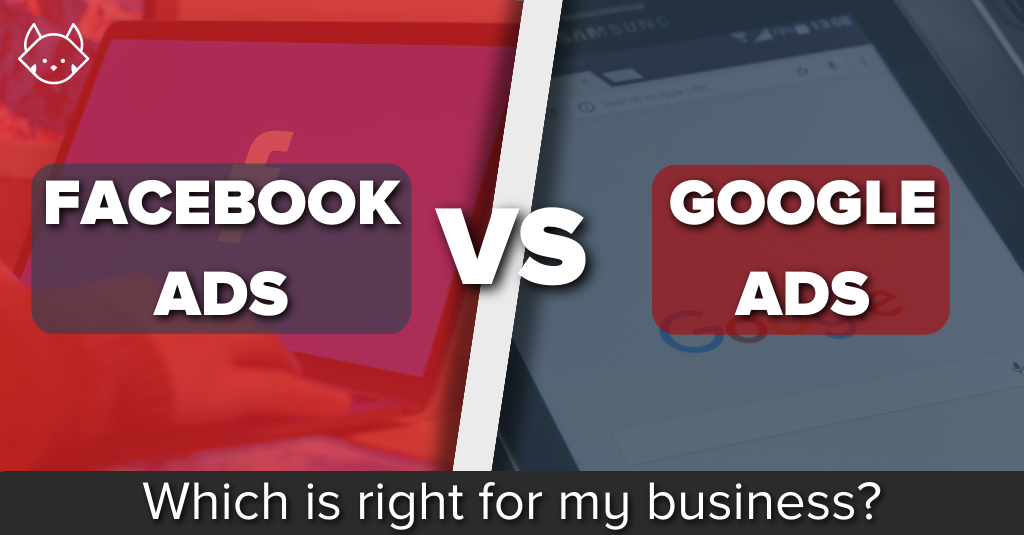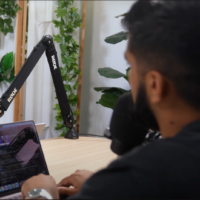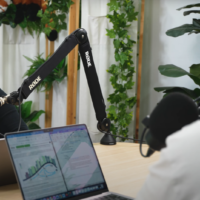Google Ads and Facebook Ads account for more than half of the total amount spent on digital ads. Both offer businesses and organisations the opportunity to reach new customers, generate leads, and drive sales. However, there are some key differences between the two platforms that can make one more suitable for your business than the other.
If you’re tossing up between using Facebook Ads or Google Ads, or if you want to know which one to focus your budget on, then this article is for you. We’re going to delve into the benefits and downsides of both ad platforms and show you how to figure out which is right for your specific situation.
In particular, we’re going to be covering:
How Google Ads Work

Google Ads, previously known as Google AdWords, is a pay-per-click (PPC) advertising platform provided by Google.
It allows businesses to create and run ads on the Google search engine and other Google-owned properties, such as Google Maps, YouTube and Gmail. The ads are targeted to specific audiences based on keywords, demographics, location, and other factors.
In Google Ads, there are several campaign types available, each with its own set of features and targeting options. Some of the most popular campaign types include:
- Search Campaigns: These campaigns use keywords to target users who are searching for specific products or services on Google. Search campaigns include text ads that appear at the top and bottom of the search results page.
- Display Campaigns: These campaigns use visual ads, such as images and videos, to target users as they browse websites across the internet that are part of the Google Display Network.
- Shopping Campaigns: These campaigns use product data to create ads that showcase specific products and their prices. These ads appear on Google search results pages and on other websites that are part of the Google Display Network.
- Video Campaigns: These campaigns use video ads to reach users on YouTube and other video-sharing platforms.
- App Campaigns: These campaigns are used to promote mobile apps on Google Play, the App Store and across the internet.
- Local Campaigns: These campaigns use location-based targeting to reach users who are searching for products or services in a specific geographic area.
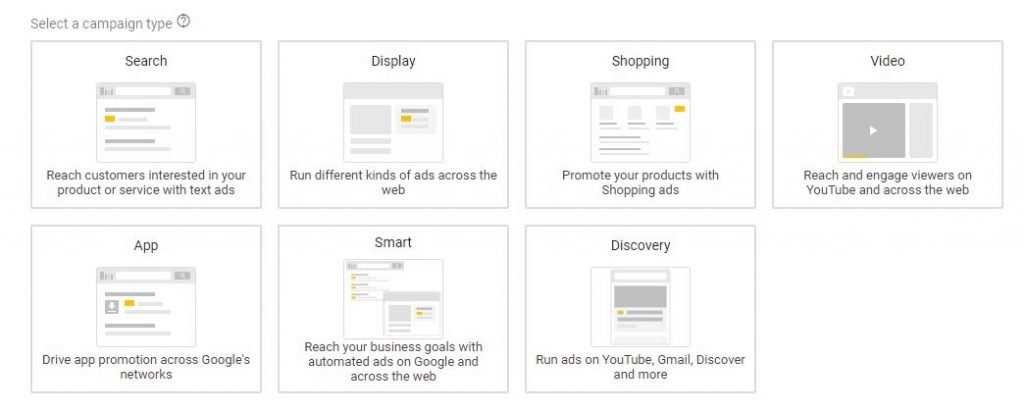
It’s worth noting that these campaign types are not mutually exclusive, you can use different types of campaigns to reach your target audience. Depending on your business objectives you can choose the campaign type that best suits your needs.
Benefits and Downsides of Google Ads
Google Ads can be a powerful tool for driving website traffic, leads and sales for businesses of all sizes, however it comes with a range of benefits and downsides. It’s important to be aware of these before deciding to use the advertising platform.
Benefits
- Reach high intent users easily
- High quality traffic
- Multi-channel targeting
- Flexible ad format options
- Pay per click system
- More data than other ad platforms
Reach high intent users easily
Google search campaigns allow you to reach high intent users by targeting specific keywords that are related to your products or services.
For example, if your business sells running shoes, you can target keywords such as “best running shoes” or “running shoes for flat feet.” When a user searches for one of these keywords, your ad will appear in the search results, providing the user with an opportunity to click through to your website.
As you’re reaching users who are actively searching for a product or service, you’re more likely to generate leads, sales and revenue.
High quality traffic
Generally speaking, the traffic generated from Google Ads will be higher than traffic generated from other platforms. The main reason this proves to be the case is that Google Ads allows you to reach users with intent to purchase, as they’re searching for specific keywords related to your product or service. Higher intent users means higher quality traffic, as you’re targeting buyers that are actively looking to purchase.
However, there are also other reasons why Google Ads has high quality traffic, including:
- Quality Score (if you can get yours high enough): Google uses a metric called Quality Score to evaluate the relevance and performance of your ads. Quality Score is based on several factors such as ad relevance, ad quality, landing page quality, and click-through rate (CTR). Ads with higher Quality Score are more likely to be shown to users and will cost less to run. As you increase your Quality Score, the quality of traffic you generate will also increase.
- Control: Google search ads allow businesses to have a high degree of control over their campaigns. You can choose the keywords you want to target, set a budget, and adjust your bids for specific keywords. This means that if your traffic quality is low, you can make adjustments on a very granular level. With this level of control, it’s possible to influence the quality of traffic that you generate.
Multi-channel targeting
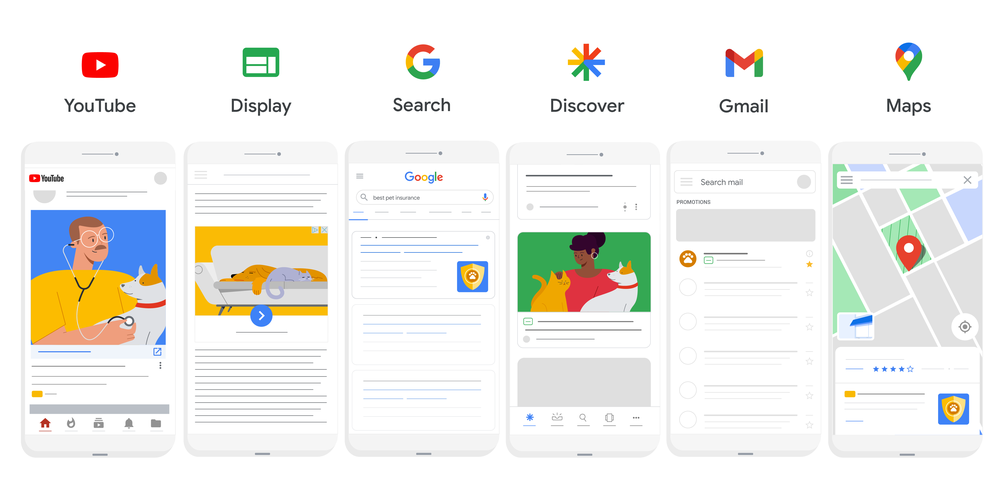
Google Ads allows businesses to reach a large audience through the Google search engine and other Google-owned properties, such as YouTube, Google Maps and Gmail. This diversity in channel targeting means that you can target users as they move through the buyer journey across different channels, rather than being limited to only targeting users across Google Search.
This makes it a great way to reach potential customers at the moment they’re searching for products or services like yours, ultimately resulting in more leads, sales and revenue.
Google’s recent program, called Google Ads Performance Max, takes advantage of this multi-channel targeting to help advertisers achieve better results. With Google Ads Performance Max, Google uses cross-device tracking to understand how users interact with their ads across different devices and automatically adjust targeting strategies accordingly. In this way, the advertiser is giving the algorithm the power to utilise multi-channel targeting to improve results on an automatic basis. This not only improves results, but it reduces the time the advertiser needs to spend on the platform. Rather than optimising the campaign themselves, Google Ads Performance Max does it automatically.
In saying this, the program is new and while it is one campaign option to utilise on Google Ads, it may still be beneficial to opt for other campaign options that give the advertiser more control.
Flexible ad format options
Google Ads allows businesses to choose from a variety of ad formats, such as text ads, display ads, shopping ads, and video ads, which can be tailored to different business objectives.

This can be extremely beneficial because if you don’t have a creative team (or the resources to build high converting creative videos and images), you can opt in to run ads across Google Search, which don’t require a creative.
On the other hand, if your company is creative heavy and has less manpower on the copywriting side, then you can focus your efforts on YouTube Ads, for example.
This flexibility means that you can use Google Ads in a way which suits your business, taking advantage of your strengths and weaknesses.
Pay per click system
One of the best things about Google Ads is the fact that you only pay when someone clicks on your ad. This means, even if your ad is seen by 10,000 users but none of them click on your ad you won’t pay a cent.
In this way, you can ensure that your budget is being spent on actually generating traffic. Do note however that this is only applicable if you run specific campaign types on Google Ads, such as Search Campaigns.
More data than other ad platforms
Google Ads has more data than other ad platforms and this data is not third party data, which means Google Ads can better optimise ads and reach the right people at the right time, meaning more leads, sales and revenue for businesses.
Downsides
- Limited search traffic
- Competition and cost
- Complexity
- Click fraud
Limited search traffic
In some cases, there may be limited search traffic around specific keywords. This might be especially problematic if you offer a type of disruptor product in it’s own category that people don’t yet search for yet. If there is limited search traffic around keywords related to your product or service, it will be difficult to actually generate traffic with Google Ads.
However, if this is the case, you can cast a wider net and target users who may not be searching for your product or service by focusing on demographic and interest-based targeting.
Competition and cost
Google Ads is a highly competitive platform, which can make it difficult to stand out, especially in highly saturated markets. On top of this, industries with higher competition have higher costs associated with advertising because brands bid against each other to compete for space online, which ultimately drives the price up.
Most of the time the cost isn’t going to be so high that it becomes a downside, however in some industries and specific locations, the price per click can get quite high.
Complexity

Google Ads is probably the most complex advertising platform to use and succeed with. In order to run successful ads, you really need to know what you’re doing, and in order to really know what you’re doing, you need to learn. The problem is that the learning curve for Google Ads is steep. If you run Google Ads, you’ll have to hire an expert to help you if you want to be successful.
Click fraud
Like any online advertising platform, Google Ads is vulnerable to fraud, such as click-fraud, which can drive up costs and reduce the effectiveness of your campaigns.
Click fraud refers to the practice of artificially inflating the number of clicks on an online advertising campaign by using automated scripts, fake traffic or other means. This can be done by a variety of actors, including competitors, malicious actors or even employees of the advertiser.
Click fraud can have a negative impact on businesses that are running Google Ads campaigns by driving up costs and reducing the effectiveness of their campaigns. Here are a few ways in which click fraud can impact Google Ads:
- Increased costs: Click fraud can cause businesses to pay for clicks that are not generated by real users. This can drive up costs and reduce the return on investment (ROI) for their advertising campaigns.
- Reduced effectiveness: Click fraud can cause businesses to pay for clicks that are not likely to convert into customers. This can reduce the overall effectiveness of their campaigns, making them less likely to generate leads or sales.
- Reduced visibility: As click fraud causes businesses to pay for clicks that are not likely to convert into customers, this can also make their ads less visible to real users, which can reduce the number of real clicks and conversions.
- Damaged reputation: Click fraud can also damage a business’s reputation by making it look like they are buying fake traffic, which can make them look less credible to potential customers.
Google Ads has taken several steps to prevent and detect click fraud. Google uses sophisticated algorithms to detect and filter out invalid clicks, and they also offer a feature to help businesses monitor and detect click fraud.
In addition, they are committed to refunding any invalid charges, and they also allow businesses to file a click fraud report to investigate suspicious activity.
In summary, Google Ads can be a powerful tool for driving website traffic, leads, and sales for businesses of all sizes with a range of benefits and downsides that should be considered when deciding if it is right for your business.
How Facebook Ads work
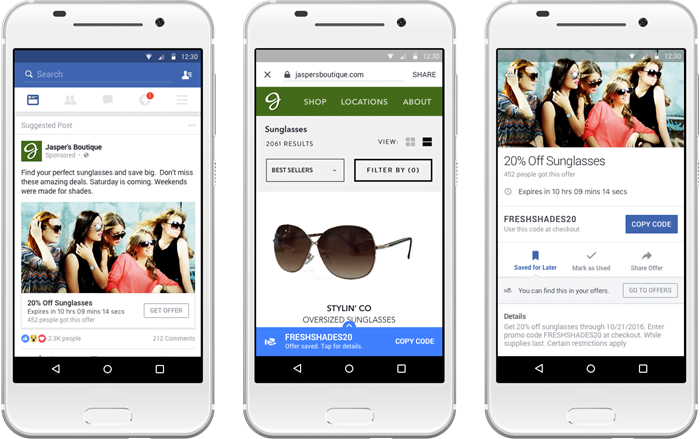
Facebook Ads are a form of online advertising that allows businesses to promote their products or services on the Facebook and Instagram platform. It allows businesses to create and run ads that can be targeted to specific demographics, interests, and behaviors.
The ads can be in different formats like image, video or carousel format, and can be placed in various locations on the Facebook platform, such as the news feed, the right column, and stories.
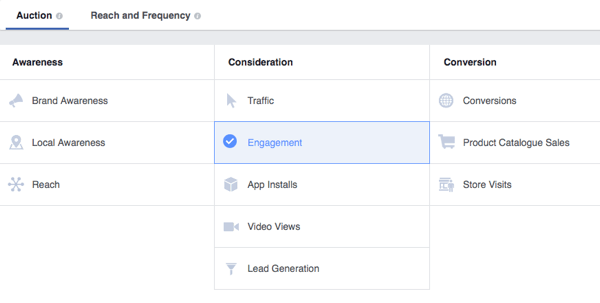
There are several campaign types that you can use on Facebook Ads, each with its own specific objective and targeting options. The main campaign types are:
- Brand awareness: This campaign type is designed to increase awareness of your brand among a specific audience. The ads in this campaign type are shown to people who are most likely to recall and recognise your brand.
- Reach: This campaign type is designed to reach a large number of people in a specific target audience. The ads in this campaign type are shown to people who are most likely to be interested in your products or services.
- Traffic: This campaign type is designed to drive traffic to your website or a specific landing page. The ads in this campaign type are shown to people who are most likely to be interested in your products or services and click through to your website.
- Engagement: This campaign type is designed to increase engagement with your Facebook page, such as likes, comments, and shares. The ads in this campaign type are shown to people who are most likely to be interested in your products or services and engage with your Facebook page.
- App installs: This campaign type is designed to drive installation of your mobile app. The ads in this campaign type are shown to people who are most likely to be interested in your mobile app and install it.
- Video views: This campaign type is designed to increase the number of views of your video. The ads in this campaign type are shown to people who are most likely to be interested in your video and watch it.
- Lead generation: This campaign type is designed to generate leads for your business. The ads in this campaign type are shown to people who are most likely to be interested in your products or services and fill out a form with their contact information.
- Sales (or conversions): This campaign type is designed to generate sales for your business. It’s common practice that if your objective is to generate revenue with advertising, you’re always going to want to use a Conversion Campaign.
A campaign is structured into 3 main components:
- Campaign: The top-level container that represents the overarching goal of your advertising efforts. This is where you choose your campaign objective and target audience.
- Ad set: The ad set contains the targeting options for your campaign, such as demographics, interests, behaviors, and location. You can also set your budget, schedule and placement (where the ad will appear I.e. Instagram Stories, News Feed etc.) for your ads at this level.
- Ad: The ad level is where you create the actual ad that will be shown to your target audience. In this section, you will be able to create ad copy, images or videos, headlines, and calls to action.
Benefits and Downsides of Facebook Ads
Benefits
- Powerful Retargeting capabilities
- Casting a wider net means more potential buyers
- Not reliant on search volume
- Ease of use
- Fast results
Retargeting capabilities
Facebook Ads has powerful retargeting capabilities. On Facebook, you can retarget users based on how they interact with your page, your videos, and your website. This can get very granular, which becomes powerful for reaching the right people.
For example, you could retarget users who have watched 75% or more of one of your video ads in the past. In this way, you’re spending money to reach users who have already shown interest in your brand.
Casting a wider net means more potential buyers
Facebook Ads is interruptive by nature – rather than targeting users who are already searching for your product or service, you’re casting a wider net.
While this approach can have its downsides, it also comes with a great benefit – you end up reaching people and generating sales from these same people whom you never would have reached if you waited for them to search for your product or service.
In this way, the nature of Facebook Ads allows you to reach and convert users you wouldn’t be able to reach otherwise.
Not reliant on search volume
Facebook Ads targeting is based on demographics, interests and behaviours, so it’s a lot easier to generate an audience to target your ads to. This means, regardless of your industry, you’re going to be able to find potential buyers to target with advertisements.
Ease of use
“I’ve seen more success with people on Facebook who don’t know how to use it because it’s easier to use than other platforms like Google Ads”.
– Tony, Paid Media Specialist at RedPandas
While it takes effort and time, the learning curve for Facebook Ads is much easier than other advertising platforms like Google Ads. This is beneficial because if you don’t have a large budget to outsource your paid media, it is possible for you to try it yourself.
Fast results
Typically speaking, results from Facebook tend to come in very quickly, which is a plus if you’re looking to generate sales quickly. On top of this, if your ad campaign is not working, you won’t have to spend months spending money to find out – you’ll know pretty quickly that you need to change something to change your results.
Downsides
- Do not pay per click
- Interruptive nature means lower traffic quality
- Ad-blocking
- Limited control on targeting and performance
- Creative resource heavy
Do not pay per click
This is a major downside, because it’s always a risk to run your ad. What if no one clicks on your ad? That’s definitely possible, but with Facebook Ads, you’ll still have to pay, whether the user clicks on the ad or not.
This is because Facebook Ads works off pay-per-impression (PPI) advertising, which is a type of online advertising where businesses pay a fee each time their ad is displayed, regardless of whether it is clicked on or not.
Interruptive nature means lower traffic quality
As Facebook is interruptive in nature, you’ll end up generating traffic from users who weren’t initially searching for your product or service, but who are finding out about your product or service for the first time.
This means their intent to purchase is low, which ultimately reflects a low traffic quality.
While this is the case in theory, it doesn’t necessarily play out like this when you actually run ads. For example, you might find that the users who are finding out about your product for the first time are actually purchasing your product or service despite not initially having search intent. The thing to note though, lower quality traffic needs to be nurtured and touched digitally multiple times before it can convert – a lot more than Google Search ads.
In other words, the interruptive nature of Facebook Ads means that it’s possible for lower traffic quality and therefore less sales and revenue, however this isn’t necessarily going to be the case all the time.
Ad-blocking
Users can use ad-blockers to avoid seeing your ads, which can reduce the visibility of your ads.
Limited control on targeting and performance
One of the main ways that Facebook Ads has limited control over targeting options and performance is through its use of a bidding system. In Facebook Ads, businesses bid for ad placement based on a set budget and targeting options. The ads that are shown are determined by a combination of the bid amount and the expected performance of the ad, as determined by Facebook’s algorithm.
This is in contrast to platforms like Google Adwords, where businesses have more control over the targeting options and performance of their ads. In Google Adwords, businesses can bid on specific keywords and choose where their ads appear on the search engine results pages. This allows businesses to have more control over the targeting options and performance of their ads, as they can target specific keywords and choose where their ads appear.
Additionally, Facebook Ads has limited control over the targeting options because it relies on the data that users provide on their Facebook profiles, which may not be complete or accurate. Google Adwords, on the other hand, uses data from users’ search queries, which is generally considered to be more accurate.
Another way in which Facebook Ads has limited control is that it uses a complex algorithm to determine the ad’s performance, which can be difficult to predict. This can make it difficult for businesses to optimize their ads for the best performance.
Creative resource heavy
To succeed on Facebook Ads, you need to test many creatives, which requires a time investment. On top of this, it requires someone with the skill to create eye-catching creatives that capture attention and generate action.
This can ultimately result in expensive costs, meaning that aside from spending budget on the advertising campaign, you’ll likely have to spend resources on building creatives to ensure that your campaign is a success.
Which is Right for my Business?
To determine which is right for your business, you need to consider:
- Your budget
- Your industry
- Whether you’re a B2B or a B2C
- Who will be running the ads
- Where your audience spend their time
Your Budget
If your budget is low or heavily constrained, you’re going to want to go with Google Ads. This is for several reasons, including:
- You’re targeting buyers at the bottom of funnel (users who are already searching for your product or service) which is the lowest hanging fruit. More bang for your buck.
- You don’t need to spend money on creative, so your entire budget can go towards running ads.
If your budget is high, then it’s best to run on both platforms, and test what works better for you.
Your Industry .
When it comes to industry, you can go with either Facebook or Google Ads. However, there are certain industries that Facebook either is very strict with (e.g. medical) or doesn’t allow at all.
If your business is in the dating industry for instance, then you’re going to want to stick with Google Ads because Facebook does not allow dating advertisements. While both platforms remain strict in this area, Google is more lenient.
Whether you’re a B2B or B2C
If you’re a B2B, you’ll get higher quality leads on Google Ads, so if you have to pick between the two platforms, then Google is the best place to start.
We’re not saying rule out Facebook ads completely for B2B (we’ve had success in certain cases here before) however it wouldn’t be the first place to start.
If you do have the budget and are starting to max out the reach on Google ads, start with Facebook retargeting ads first.
If you’re a B2C, you’ll likely have a far bigger split of your digital media spend on social media – although this shouldn’t always be the case.
While Facebook (and social media ads in general) do better for B2C, this isn’t always the case. Depending on your industry and demand, Google ad formats may also work great. You’ll have to test and learn to find the best mix for your B2C brand.
In short, if you have the budget, try both advertising platforms, and if you don’t, consider the above as a factor in determining which platform you choose to use.
Who will be running the ads
If yourself or another team member who does not specialise in advertising is going to be running the ads, you’ll need to take this into account.
If you will be running the ads without the technical know-how then be careful of creating large, big budget campaigns in Google ads.
For instance, although the Google Ads platform will give you good recommendations to optimise your campaigns, often these will just suck your budget dry. Most professional ad experts don’t accept all (if any) of Google’s optimisations and instead are more selective with optimisations they deploy.
If your budget is sizeable, it may be worth considering getting external expertise to build and optimise your campaigns.
Facebook ads in contrast has a far shallower learning curve and is a lot easier for most levels of expertise to navigate.
Where your audience spends their time
You’re going to want to think about where your audience spends more time. If your audience predominately spends a part of their evening scrolling through the Facebook News Feed, then Facebook Ads makes more sense than Google Ads. On the other hand, if your audience use Google Search as their predominant digital platform, then you’ll focus your efforts there.
It’s difficult to really know where your audience spends their time, so only use this as a consideration factor if it’s really obvious where your audience spends their time or if there’s data to back it up.
When in doubt: Test and learn! If you have the budget, we always recommend having a small experimental budget to use for channels that may be non-traditional for you e.g. TikTok or LinkedIn Ads.
So, what’s next?
opefully you now have an idea of whether to choose Facebook Ads or Google Ads – and if you have the budget, to choose both!
At the end of the day, both ad platforms have their advantages and disadvantages, and it’ll be up to you to decide which is right for your specific business.
If you need assistance in managing or planning your advertising efforts, you can get in touch with one of our experts here. In the meantime, if you found this article helpful, you might also be interested in our 5 Point Paid Audit article, which shows you how to craft the perfect Facebook Ad.
